The Research
How do families of various backgrounds perceive and experience race and racism? To answer this, our friends at Noggin and Paramount surveyed more than 15,000 families in 2019 and 2020, representing a broad cross-section of America and its varied social and political demography. Then, to better understand how families have discussions about race and racism, two qualitative follow-up studies were conducted. In the first, Black and White parent-child pairs discussed “racist scenarios” while a researcher watched. In the second, Black, Asian, Hispanic, and White families discussed scenarios to allow the researchers to understand a larger demographic.
Core Findings: "Let's Talk About Race & Racism"
Kids Are Often Ready to Talk Before Parents Start Talking.
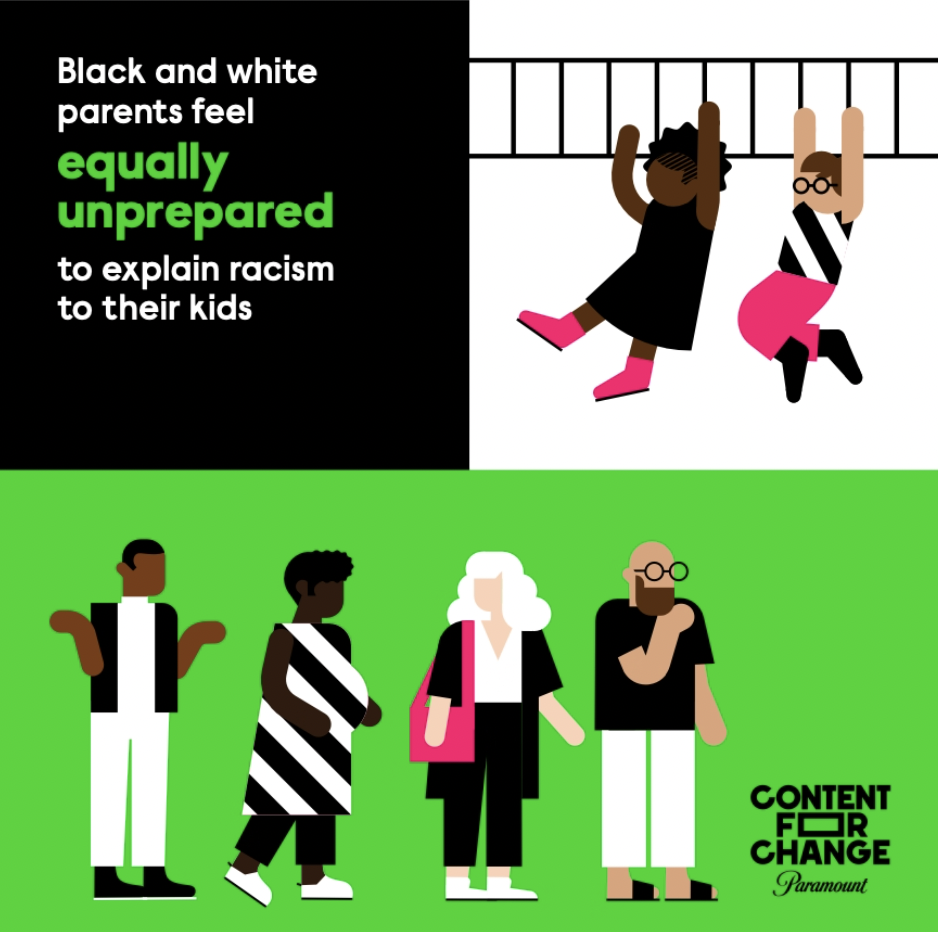
Children start noticing race during infancy.
Previous research has shown that children start noticing race as babies. Between 6 and 12 months, babies begin to show a preference for members of their own racial groups (source). By 9 months old, infants looked longer at own‐race faces paired with happy music than at own‐race faces paired with sad music (source). From their earliest age, children are picking up on status from the culture around them (source).
But parents often think kids aren't ready to talk about race and racism yet.
Previous research has demonstrated that U.S. adults underestimate kids' ability to understand and talk about race. Grown-ups say children develop the capacity to process and understand race at around age 5, but research shows most are capable of understanding and talking about race as toddlers. This misjudging of children's capacity has an impact on when parents start talking about race/racism with their children (source).
Parents of all races say they feel unprepared to talk about race and racism.
In the qualitative research, parents of all races reported they felt unprepared to talk about race and racism with their children. For example, when asked to rate how prepared they felt to discuss stories of racism with their kids on a scale of 1-5, Black and White parents reported feeling equally unprepared, with an average rating for both families of 2.4 out of 5.
Parents of Color Are Talking to Kids About Race Earlier.
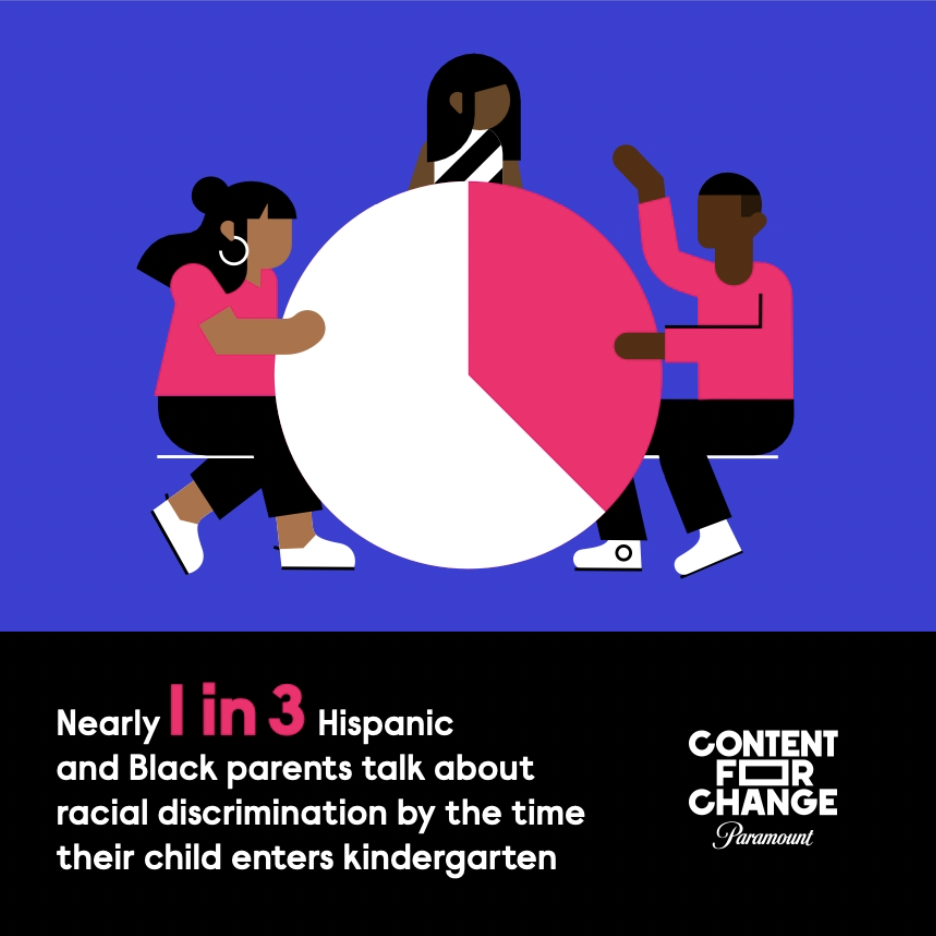
While all parents reported feeling unprepared, parents of color are talking with kids earlier.
Nearly one out of three Hispanic and Black parents are talking about racial discrimination by the time their child enters kindergarten.
For families of color, conversations are often born out of necessity.
These conversations are often born out of necessity. Asian families say they are talking to their kids about dealing with or avoiding harassment – including increased harassment resulting from misperceptions around the Coronavirus. Hispanic parents are talking to their kids about the use of Spanish outside the home (whether speaking or playing music).
Perceptions and Experiences of Race and Stereotypes Differ Across Races.
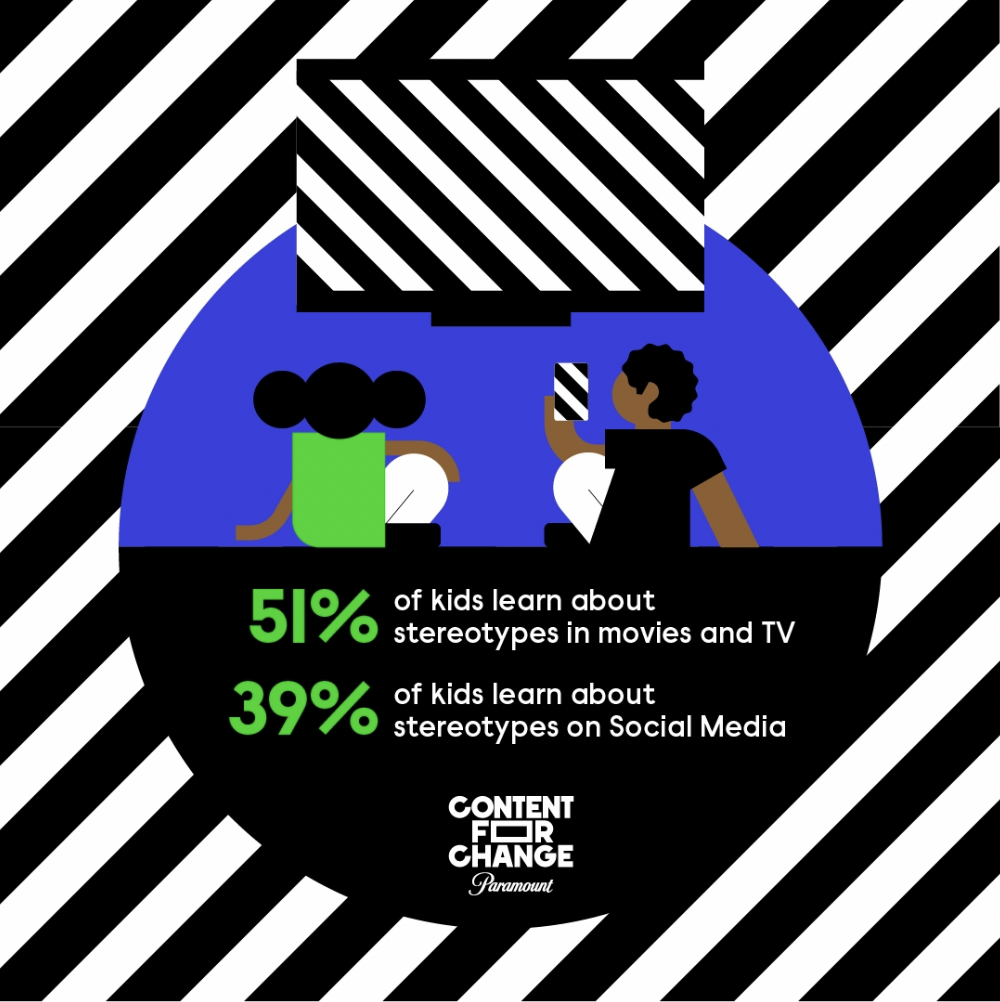
Stereotypes start early.
The American Academy of Pediatrics (2020) reports that children as young as two years old can internalize racial bias. A study by Northwestern University showed negative bias towards Black boys at just four years old (Perszyk et al., 2019).
Even though having preferences to those similar to you is developmentally expected, it highlights the importance of early conversations around celebrating differences instead of avoiding them, and finding similarities between people that are beyond the surface.
School and media are sources of stereotypes.
The top three places kids reported hearing stereotypes are:
- At school (61%)
- In movies and on TV (51%)
- On social media (39%)
Kids of color are more likely than White kids to feel that their race/ethnicity is not well-portrayed in movies and on television: 55% of Black kids said their race was not portrayed well, compared to 45% of Hispanic kids, 40% of Asian kids, and 30% of White kids.
In the "Let's Talk About Race & Racism Research," a young Asian boy pointed out that most princesses he has seen have light skin, not dark. One young Black girl told her mother she thought robbers were Black because that’s all she’s seen on TV shows and in movies.
Who Kids See on Screen Has an Impact.
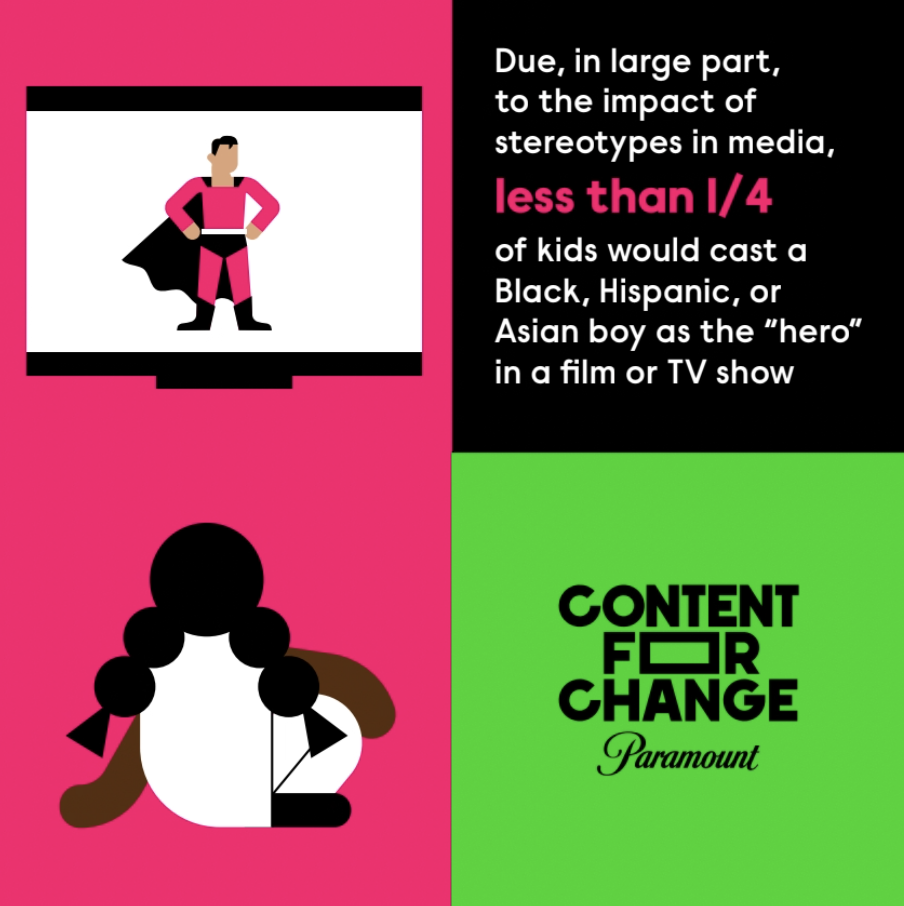
Kids of color don't feel they are well portrayed on screen.
Researchers asked kids whether or not they think their race/ethnicity is well portrayed in television and movies.
Forty percent of Asian kids, 45% of Hispanic kids and 55% of Black kids did not think they are well portrayed in media. (Only 30% of White kids did not think their race was well portrayed in media.)
Kids notice and internalize media stereotypes.
When kids were asked to reflect on stereotypes in films and TV shows, 52% of kids would cast a white boy as the “hero,” while only 19% of kids would cast a Black boy in the role, and just 12% picking Hispanic and Asian boys. It’s time for a reality check on the pervasiveness of character tropes based on race, ethnicity, and gender that children have been indirectly taught over the years.
It's important — especially to kids of color — to see themselves represented on screen.
According to the research, about half of Hispanic and Asian kids and nearly three-quarters of Black kids think it’s important to see their own race/ethnicity on screen. (Just one-third of White children feel it is important.)
Families of Different Races Had Different Responses to Scenarios.
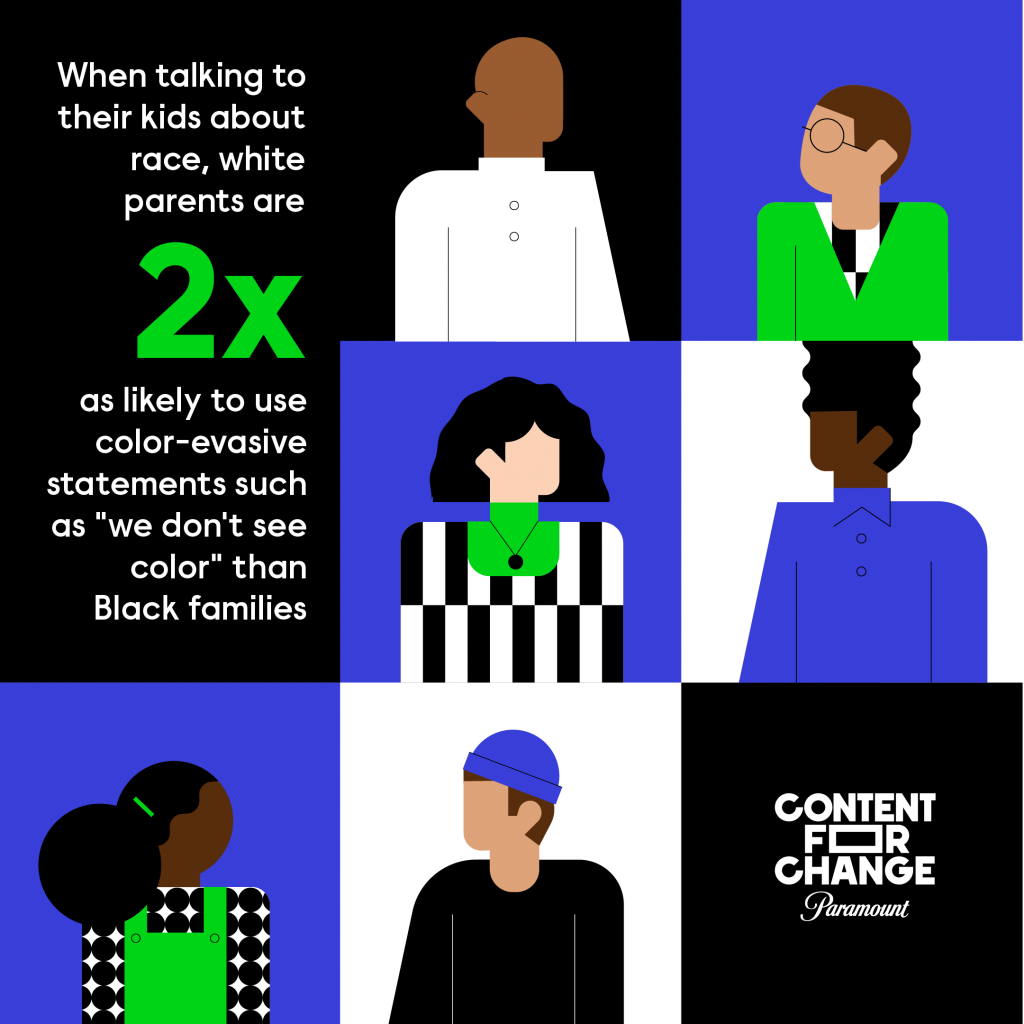
When discussing the situations in the prompts provided by the researchers, all families used words such as unfair vs. fair, and right vs. wrong, but Black families were far more likely than White families to use the terms racist and racism. Specifically, Black kids were four times as likely to use the terms racist and racism, and Black parents were three times as likely. White families tended to describe the situations with words such as good vs. bad, mean, not nice, and rude.
Black families were more likely than White families to use emotion-based words such as angry, mad, sad, and upset.
Using color-evasive language like “we don’t see color” can be problematic for several reasons. It creates a taboo around race and differences, rather than celebrating them, ignores the suffering of those who experience racism, and does not set children up to successfully identify racism and intervene.
Kids Think it Will Take a Long Time to Achieve Racial Equality.
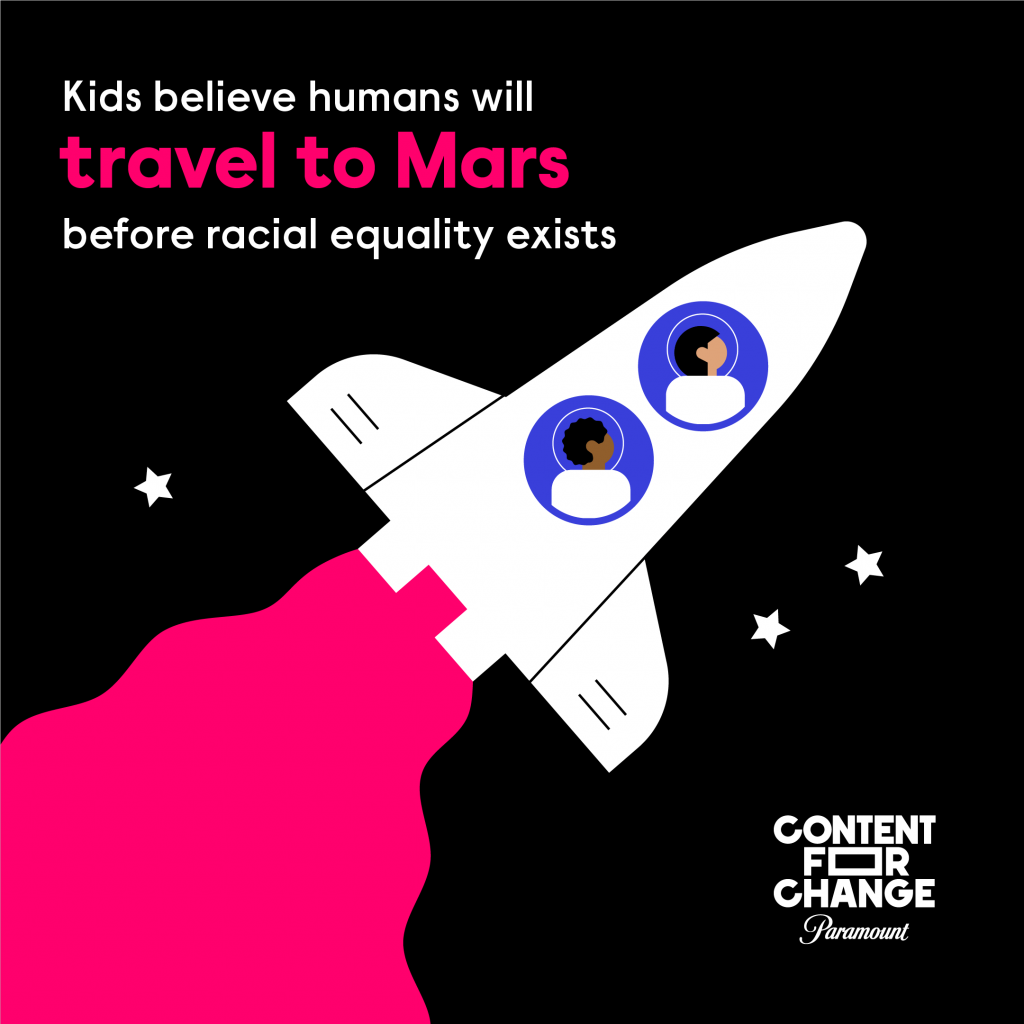
Kids were asked when they thought racial equality would happen. The majority of kids believe racial equality is one of the last challenges people will solve.
What do kids predict will happen BEFORE racial equality exists?
- Humans will travel to Mars
- Doctors will cure cancer
- The United States will have a female president
- We’ll experience climate change making Earth uninhabitable
Black children predicted racial equality would happen later than White, Asian, and Hispanic children did.
Acknowledgements
Thank you to our research study advisor board members: Dr. Allison Briscoe-Smith, Dr. Beverly Daniel Tatum, Dr. Rashmita Mistry, Nicole Stamp, Dr. Kira Banks, Dr. Riana Elyse Anderson, and Dr. Kevin Clark.
Thank you to the OK Play team and the Toronto Metropolitan University’s Children’s Media Lab for their collaboration on the “Talking to Families about Race & Racism” research project. And to the following individuals for their instrumental work on the research project: Dr. Remi Torres, Anna Kimura, Josanne Buchanan, Dr. Mamatha Chary, Maya Lennon, Adrianna Ruggiero, Amber Cape, Annika Daug, Eliza Rocco, and Maria Cruz Gutierrez.
Thank you to the Noggin and Paramount teams who contributed to this work: Makeda Mays Green, Andrea Strauss, Ron Geraci, Dr. Michael Levine, Dr. Colleen Russo Johnson, Daniel Ramos, Angela Ojeda, Noelle Yoo, Brittany Sommer Katzin, Winnie Cheung, Courtney Wong Chin, and Hannah Peikes.
Thank you to Sparkler Learning for publishing the preschool-aged guide, “Discussing Race With Young Children: A Step-by-Step Activity Guide” that resulted from this work.


